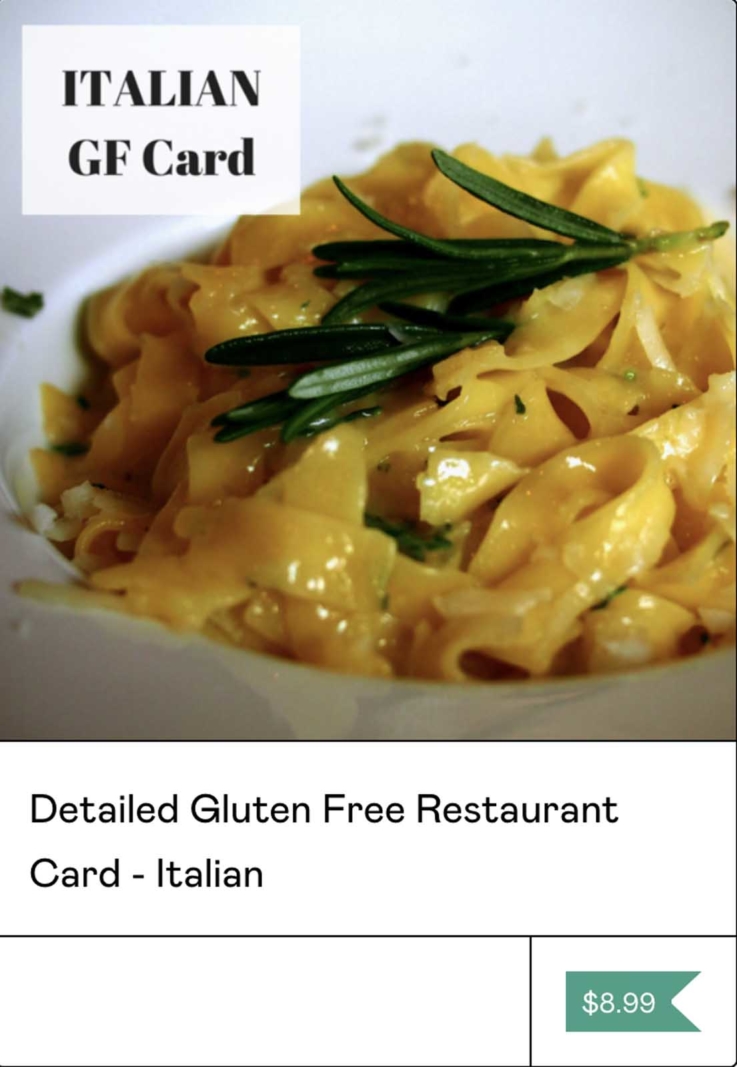If you believe in a higher power, Italy proves they have favorites. Not only does the country have some of the most beautiful cities in the world and is full of things to do, but Italian food is also in a league of its own.
Italian cooking is full of flavor, fresh vegetables, and herbs. In Italy, local cuisine varies per region, and you’ll find recipe variations and region-specific dishes when traveling across Italy. Lazio, Veneto, Campania, Liguria, and Tuscan cuisine are some of the most popular Italian foods.
Table of Contents
Traditional Italian Food
Of course, we recommend that you should try it all if you can. But it can be helpful to have some guidance when wondering where to start. From Venice to Palermo, we’ve picked the best Italian dishes for you to try in Italy or at home. Whether you want Italian cheeses, desserts, or just to be inspired to try some popular Italian foods, this guide will provide plenty of food for thought.
1. Parmigiano Reggiano
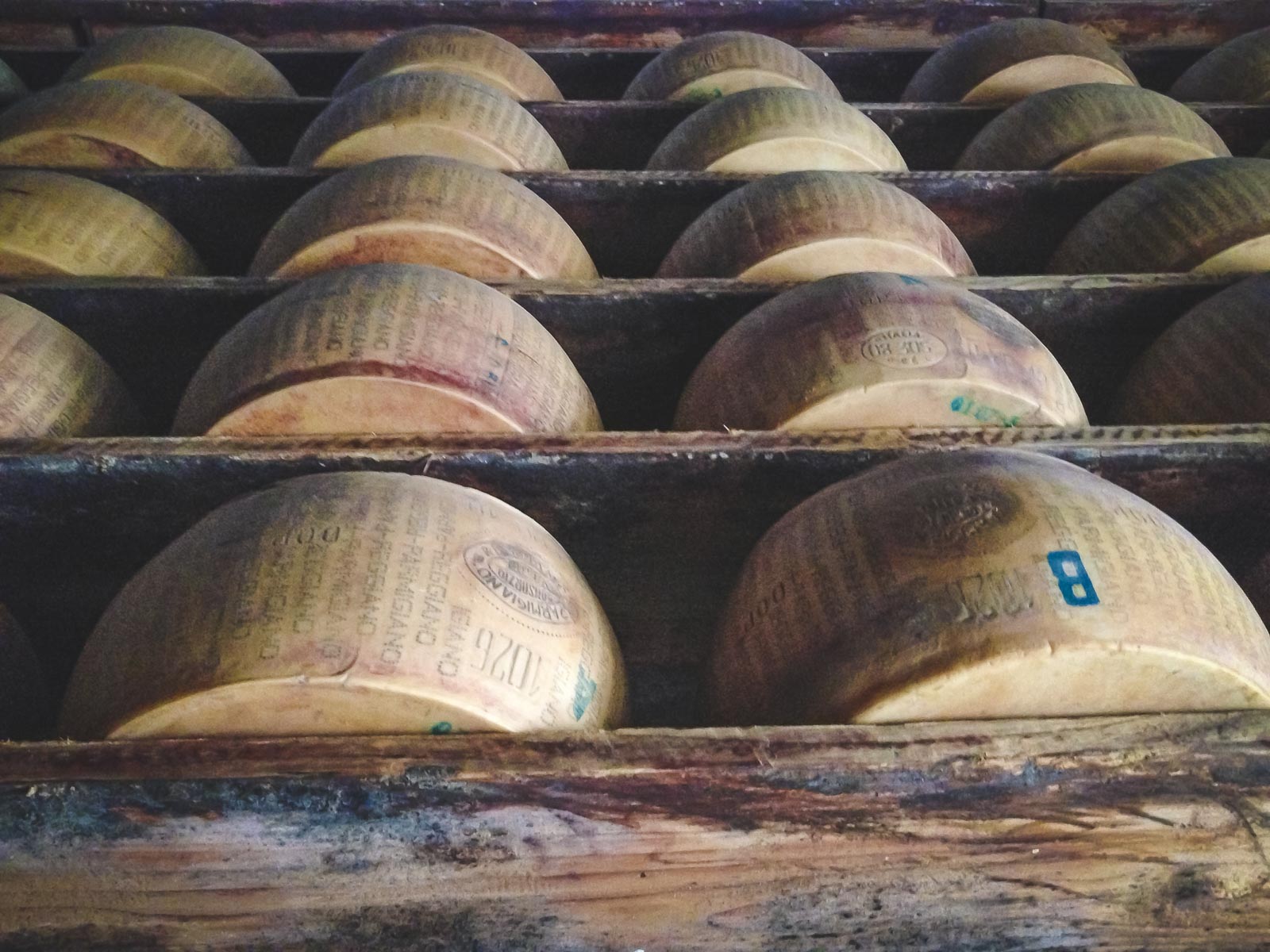
Most people have heard of parmesan cheese. Parmesan is produced from cow’s milk and is famous as a hard, grated cheese. It has a nutty taste and is usually found sprinkled over a risotto or pasta dish.
Parmigiano Reggiano is a particular version of parmesan cheese. Records of the cheese date back to the Middle Ages, and modern producers have to abide by a series of strict standards and regulations.
Firstly, to be declared Parmigiano Reggiano cheese, the product can only come from Italy’s Reggiano region. Also, while all parmesan cheese is aged for at least 12 months, Parmigiano is often aged up to three years. Because of the extra time and investment, Parmigiano Reggiano cheese is costly and is a luxury Italian food. For some rolls of cheese, you can pay up to $1,000.
If you want to try Parmigiano cheese, the best way is at a restaurant; otherwise, you’ll have to make an expensive roll purchase. Certain restaurants, especially in the Reggiano region, offer grated Parmigiano over dishes. Keep your eyes peeled when traveling in Italy.
2. Pizza Margherita
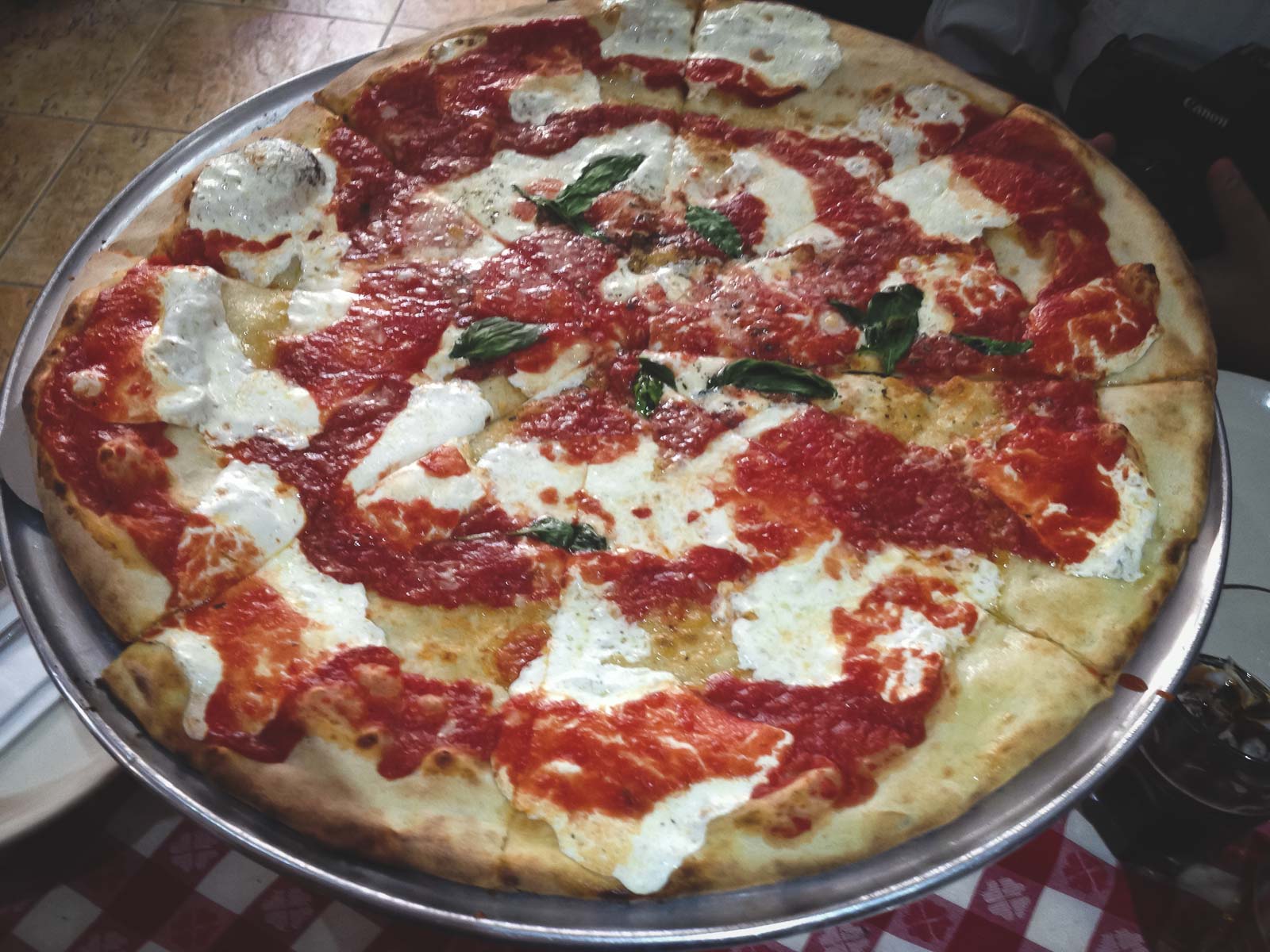
Pizza Margherita is perhaps the most famous Italian food. Wherever you go in the world, you’ll never be too far from a Margherita pizza. However, a classic Italian Margherita is the best option to try.
This Neapolitan pizza is traditionally made with mozzarella cheese slices, fresh basil leaves, and a light tomato paste. The pizza dough is made from scratch and is rolled into a rough circle shape – unlike the perfect circles we see outside of Italy,
Interestingly, Margherita in Italian means ‘Daisy’. The pizza is said to have been created in 1889 in honor of Queen Margherita of Italy, whose name translates to Daisy in English. However, records show that this event merely popularized the relatively unknown dish. Try this recipe for a great pizza at home!
3. Pasta e Fagioli
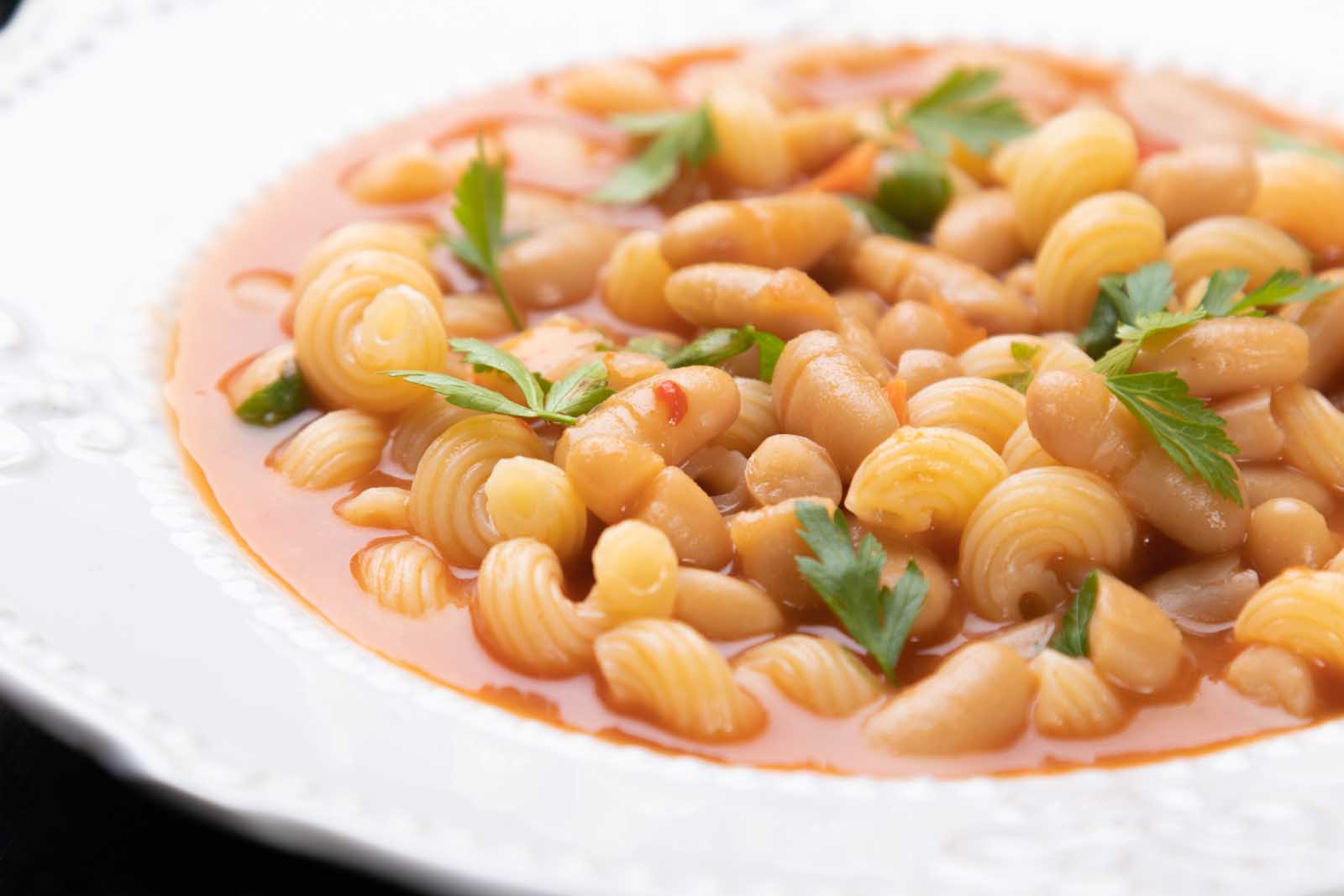
Pasta e Fagioli literally translates as “pasta and beans”. A humble but delicious dish, pasta e Fagioli originates from Italy’s Campania and Emilia regions.
The centuries-old dish was once famous for being a peasant meal, as pasta and beans were cheap ingredients to make a budget-friendly yet hearty dish. However, nowadays, everyone loves to eat pasta e Fagioli.
The typical dish uses a mixture of meat broth and tomato sauce to create a rich sauce for the pasta and beans. Ground beef is often added alongside dried herbs like oregano and basil. Pasta e Fagioli is warming and flavorsome – ideal for a cold winter night, especially with this recipe.
Check out More Foods From Around The World
- Spanish Food: 17 Spanish Dishes to Try in Spain or at Home
- French Food: 24 Traditional Dishes To Try in France or At Home
- British Food: 23 Best UK Dishes to Try at Home or Abroad
- German Food: 20 Traditional Dishes To Try in Germany or At Home
- Turkish Food: 21 Traditional Dishes to Try in Turkey or At Home
4. Bistecca alla Fiorentina
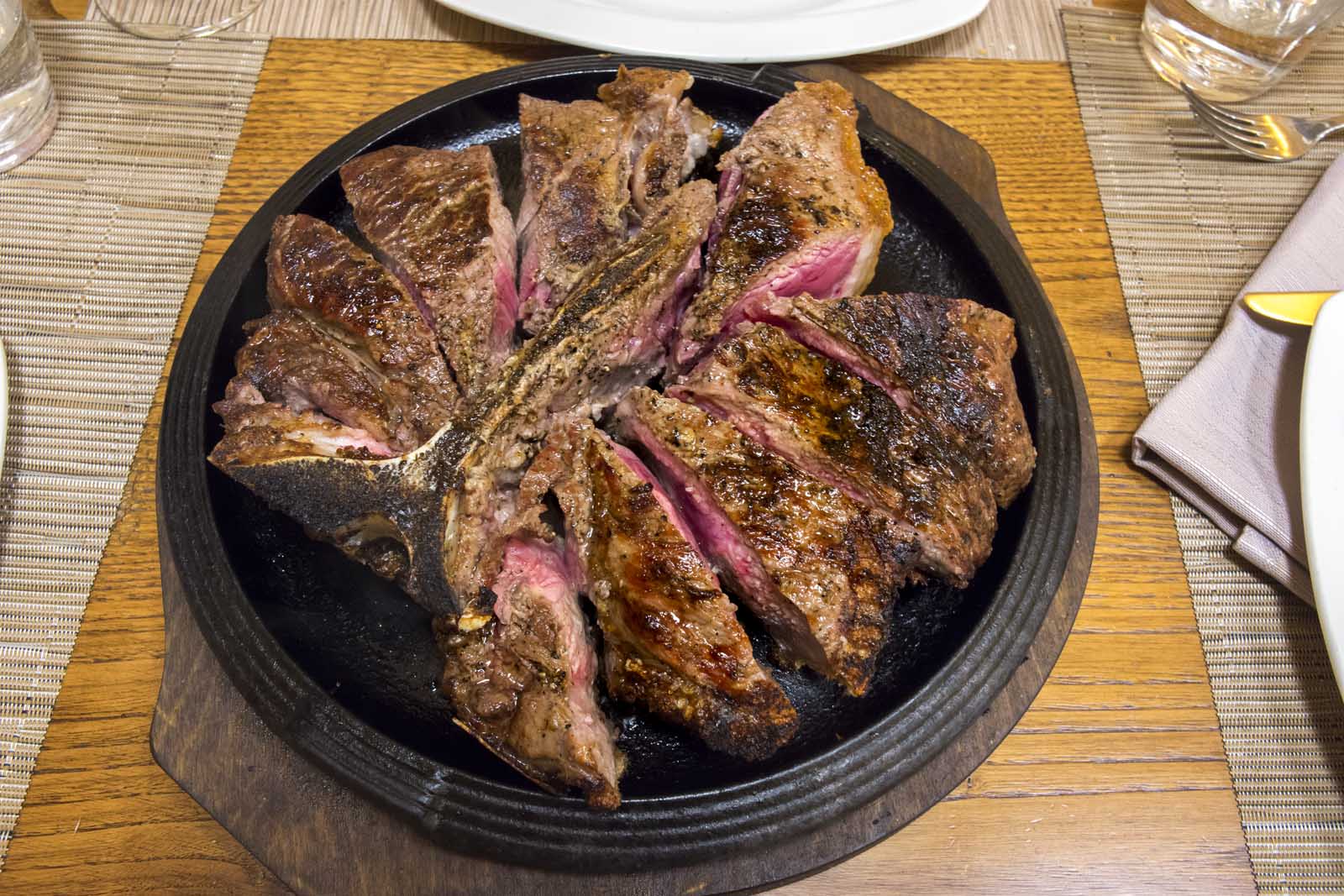
Bistecca Alla Fiorentina is simple but arguably the most popular meal in Tuscan cuisine. This steak recipe originated in Florence and has been perfected over centuries. However, you may find a few differences from household to household.
Bistecca Alla Fiorentina is a beef steak cut from heifers or steers. Traditionally, the steak is cooked in a specific way, always grilled over embers in true barbecue style. Chefs start by grilling the meat close to the embers, then raising the beef to cook further away from the heat and undergoing an individually perfected rotating process.
Bistecca is served rare to medium-rare, and a mark of a good bistecca is a soft, pink center. Bistecca is often eaten during Festa di San Lorenzo celebrations and is well-paired with a large glass of heavy-bodied red wine.
5. Risotto alla Milanese
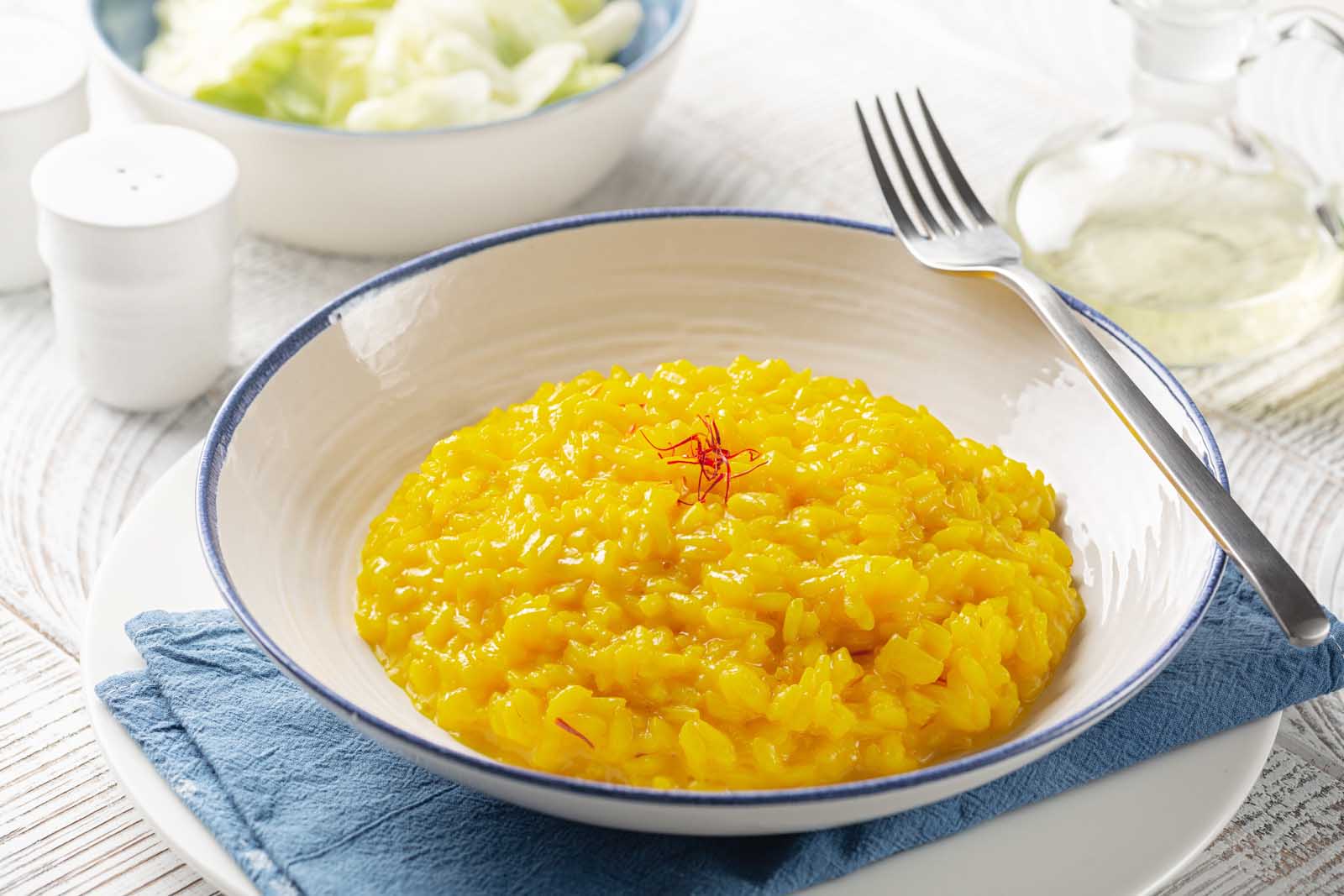
Who doesn’t love a good risotto? Risottos are filling and warming, typically served in a delicious creamy sauce. If this sounds up your alley, a classic Italian recipe is the risotto alla Milanese.
As you may have guessed from its name, this creamy rice dish originates from Milan. Well, kind of. Risotto has been eaten across Italy for centuries but was formally named in Milan by chef Felice Luraschi in 1929.
The recipe uses melted butter and white wine to gently sauté the rice grains first, gradually adding water and broth to simmer the rice. The broth can be meat or vegetable, which is perfect for vegetarians. Risotto Alla Milanese usually includes onion and grated parmesan cheese, although this could vary per recipe.
6. Pasqualina

Easter eggs might be the popular Easter treat now, but Pasqualina has been eaten in Italy for centuries on Easter. The savory pie consists of spinach, egg, and ricotta cheese and is typically served cold after being cooked in advance. In some recipe variations, you may find artichokes and other vegetables added.
Pasqualina is a traditional dish from Northern Italy that originated in Liguria. When it was first created, the pie had over 33 layers representing the years of Christ’s life. However, since the 16th century, these layers have been reduced due to financial and time constraints. Instead, you’ll find Pasqualina with a few layers at most.
7. Gorgonzola Cannelloni
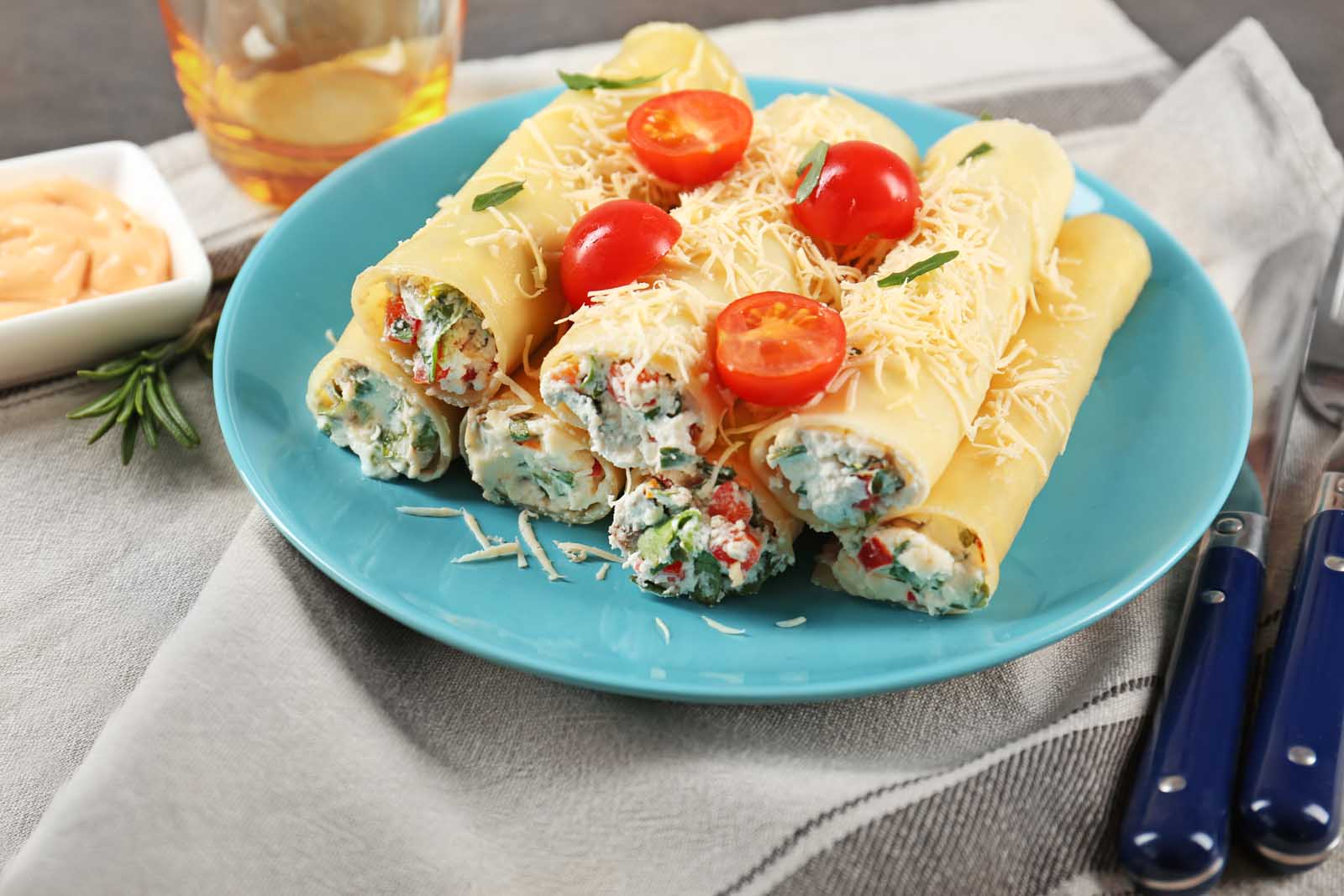
Cannelloni is famous in its own right. The stuffed pasta dish consists of lasagna noodles packed with tasty fillings. Cannelloni originates from Italy’s Emilia Romagna region, but you’ll find it across all of Italy and in some countries abroad.
This specific type of cannelloni uses Gorgonzola cheese as a filling. Gorgonzola is a blue cheese made from unskimmed cow’s milk. The cheese can vary in texture, sometimes soft and other times crumbly. The texture massively depends on the producer’s independent preferences. However, in taste, Gorgonzola cheese remains similar and is sharp and salty.
Gorgonzola stuffed cannelloni is one of the strongest tasting and delicious cannelloni dishes that you can try. This is a good option if you are looking for Italian recipes at home. Stuffing cannelloni is strangely therapeutic and is an excellent social activity.
8. Mozzarella cheese
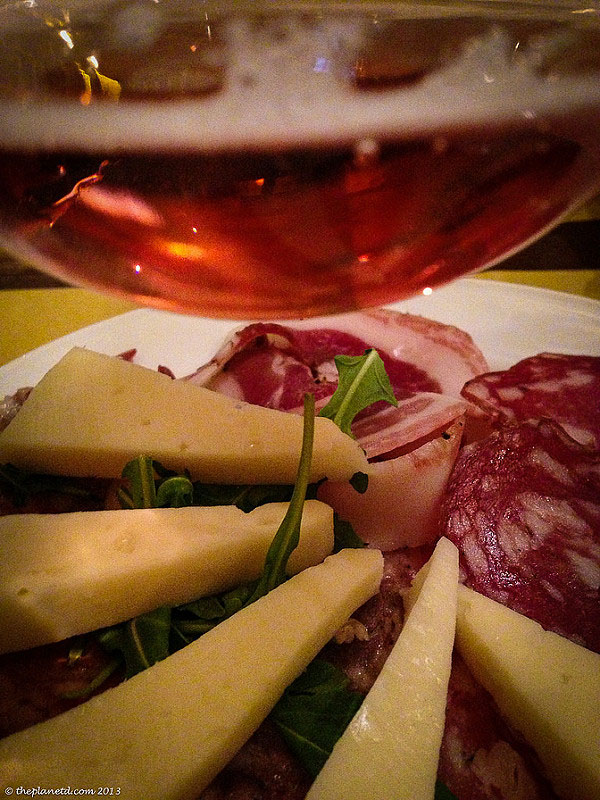
Mozzarella cheese is another famous Italian food. Rather than being made from cow’s milk (as it mostly is nowadays), traditional mozzarella is an extremely soft cheese made from Italian buffalo’s milk. It has a smooth, velvety texture and is quite bland in taste – preferred for texture over flavor.
Records of mozzarella cheese date back to the 1st century and are widely believed to have originated from just outside of Naples. It can be eaten raw or cooked and used as an ingredient in many Italian recipes.
While you can try mozzarella all over the globe, fresh mozzarella is the yummiest. Save some time for mozzarella tasting when traveling to Italy. You’ll commonly find mozzarella in Italian pasta or pizzas, typically paired with a tomato sauce or paste. The cheese is also just as tasty eaten alone, and you can always purchase a block of cheese from a local supermarket or producer. Don’t worry; it is much cheaper than blocks of top-end Parmigiano.
9. Insalata Caprese
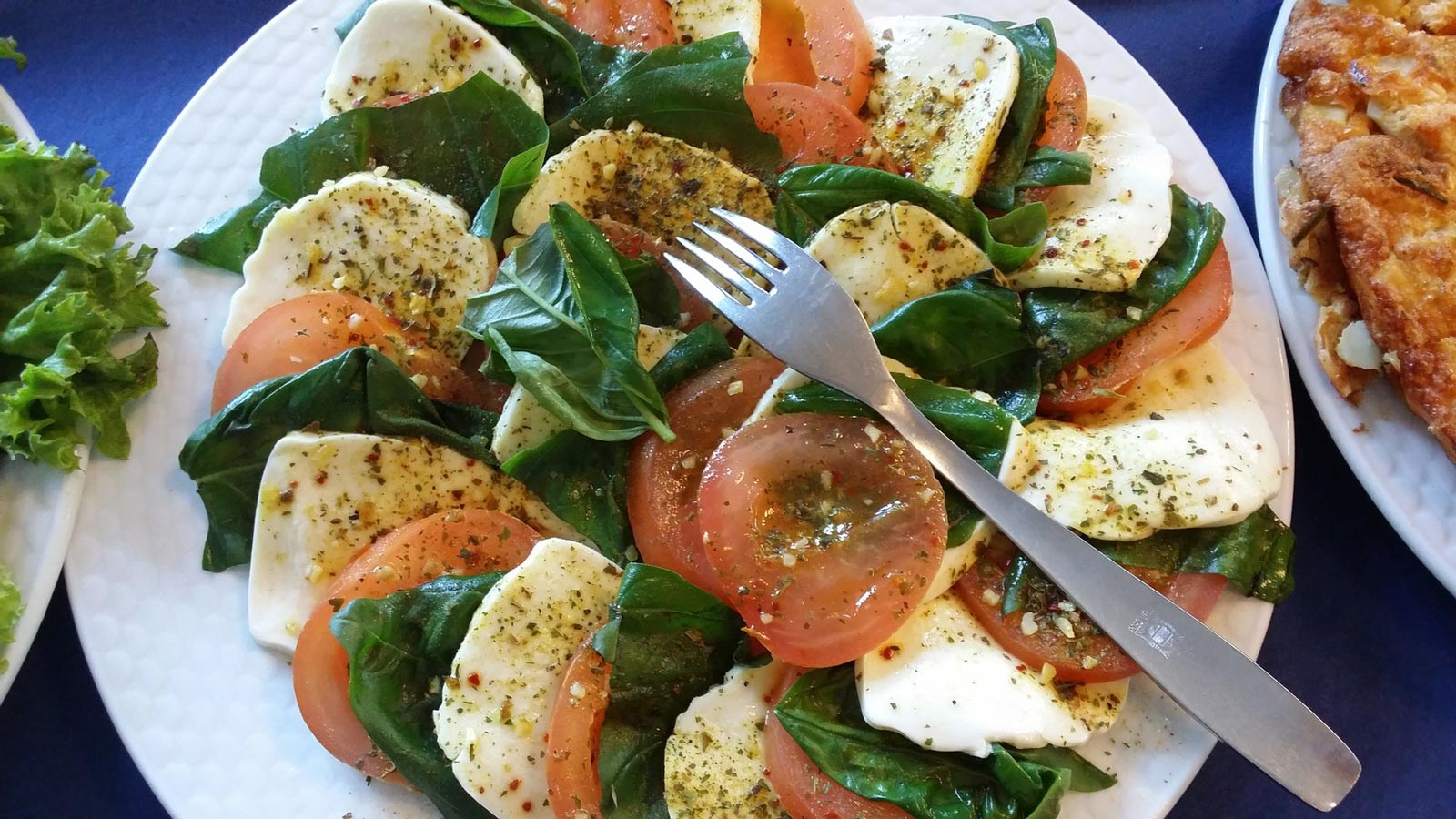
Speaking of fresh mozzarella, it is one of the main ingredients in an Insalata Caprese – a famous Italian salad. You can prepare this salad at home or try it while traveling in Italy. It is straightforward and easy to prepare yet extremely delicious.
The salad commonly contains thick slices of big tomatoes, slices of mozzarella, and fresh basil leaves. Presentation is vital when preparing an Insalata Caprese. You’ll often see the ingredients delicately laid in a circular pattern on a large plate.
Italian speakers may recognize from the salad name that this dish comes from Capri, an island in Southern Italy. The salad was developed as a patriotic symbol in the 1920s, displaying three ingredients in the colors of the Italian flag.
10. Prosciutto Crudo
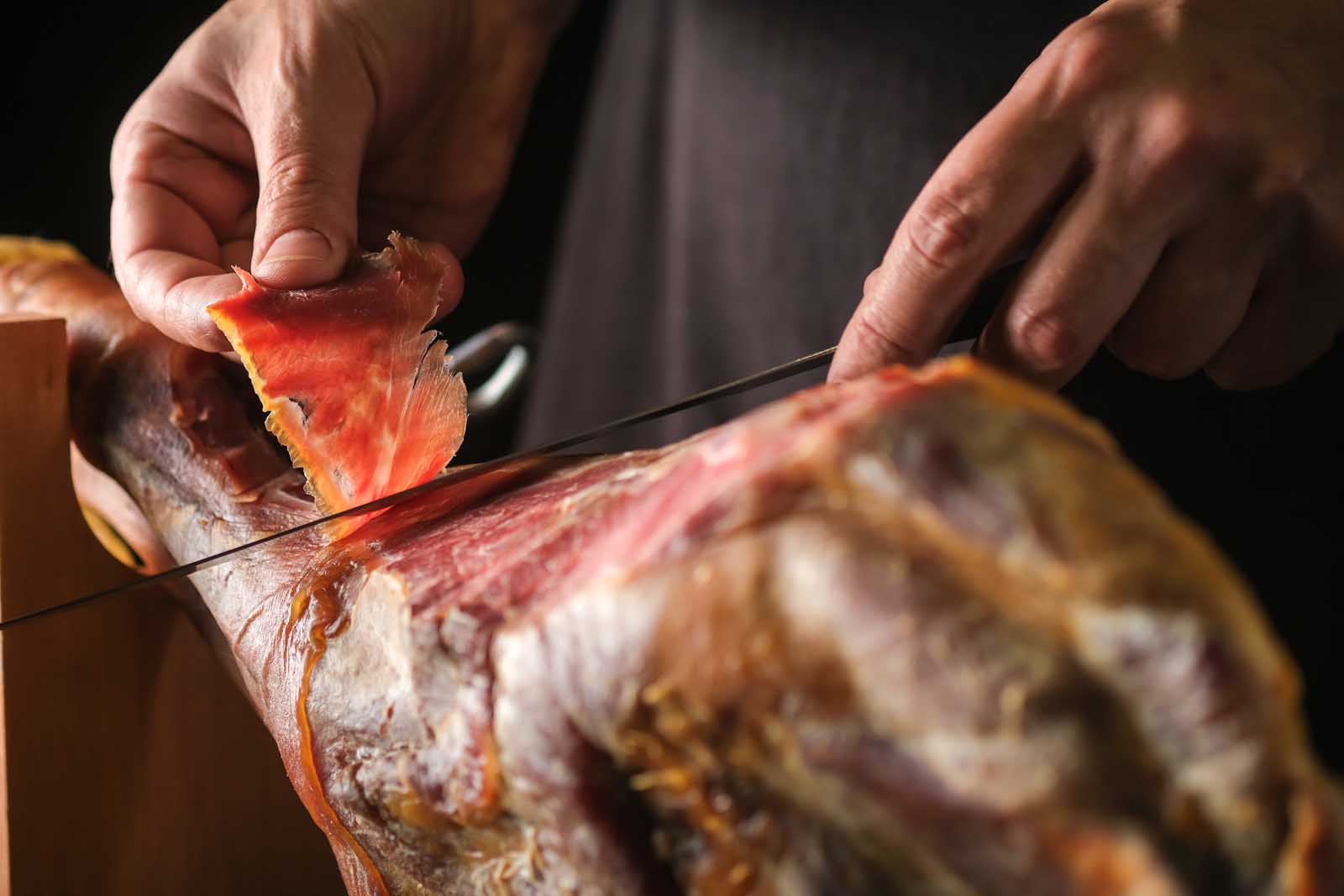
If you eat meat and pork products, you’ve likely tried cooked ham in your lifetime. However, prosciutto Crudo is slightly different from a standard ham dish. It is one of the best-cured meats that you can taste in Italy.
Italians have been curing meats in salt since before the Roman era, so prosciutto has a lengthy history. Over the last century, prosciutto has spread across the globe.
This Italian food is dry-cured and served raw, typically arranged aesthetically in thin slices on a platter or large plate. It has a salty but otherwise natural taste. Italian regulations specify that the only added factors and ingredients can be sea salt, air, and time. Prosciutto is about as organic as food can get these days.
If you don’t fancy trying uncooked ham, you could always try the cooked alternative, prosciutto Cotto. However, since you are probably already familiar with cooked ham, we believe that prosciutto Crudo provides the best experience.
11. Tartufo di Pizzo

Tartufo di Pizzo is a top dessert recommendation for those with a sweet tooth. This Italian dessert is extremely regional-specific. In fact, you can only call the dish by its proper name if it was made in Pizzo, its town of origin in Calabria.
So, what is so special about Tartufo? The dessert is an ice cream (aka gelato) creation that is served frozen and covered in a layer of cocoa powder. In traditional Tartufo, you’ll find hazelnut ice cream and chocolate. However, nowadays, you tend to have different flavors to pick from as well.
You may struggle to find Tartufo outside of Italy. Plus, even if you did, it would be controversial to still call it Tartufo, remember? But, if you plan a visit to Pizzo, make sure to try Tartufo di Pizzo.
12. Fontina cheese
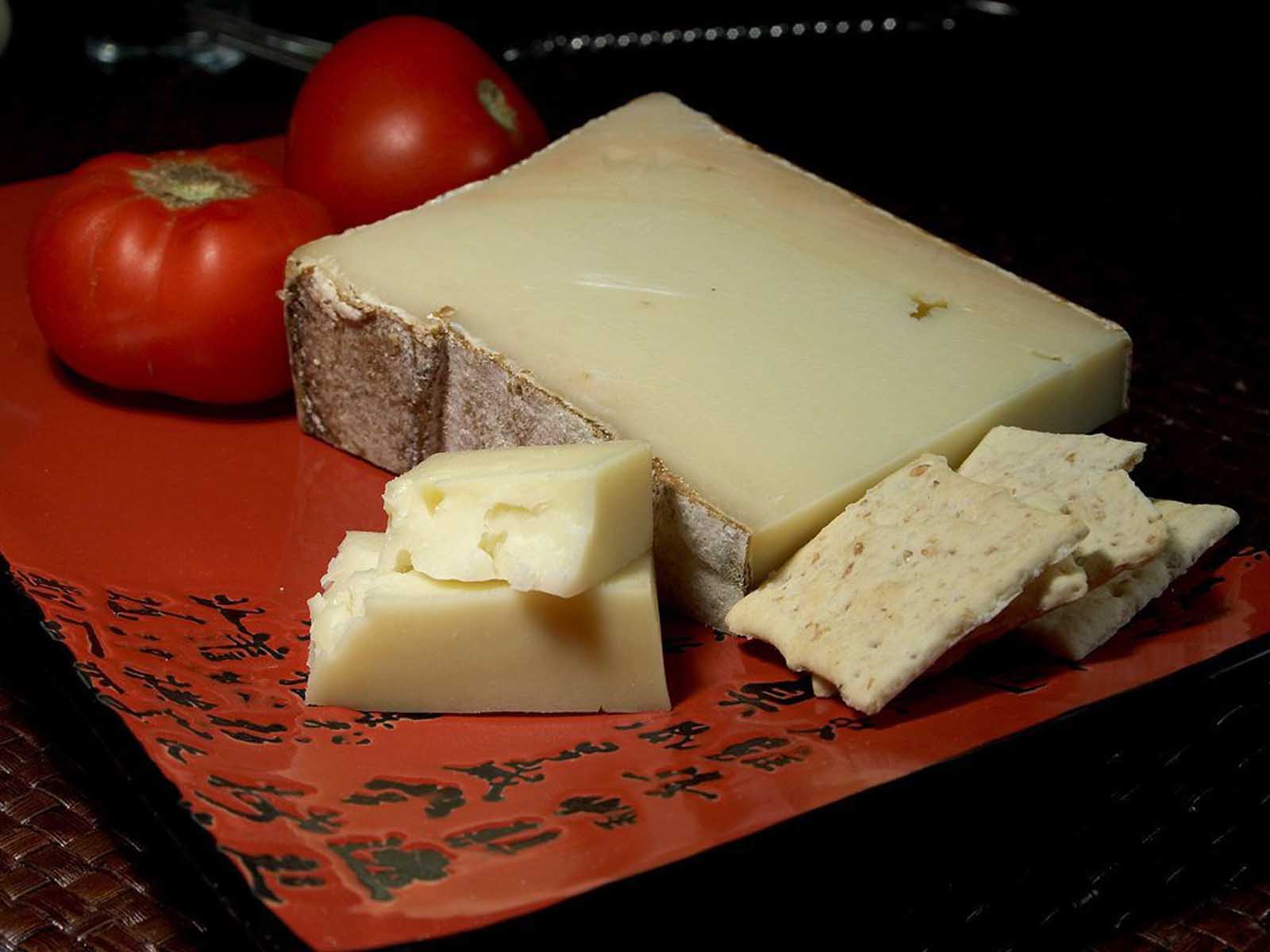
Have you seen the cheese with holes in it? That is fontina cheese. While it originated from the Aosta Valley in Italy, the cheese is eaten worldwide.
The cheese is made from cow’s milk and is aged between three and six months on average. The cheese is a classic pale yellow and is typically served in slices when younger and grated when more aged. It has a slightly nutty flavor which also gets stronger as it ages.
Younger fontina cheese is popularly used as a melted topping for dishes like pizza. Older fontina cheese is used similarly to parmesan as a grated topping for risotto or soup.
13. Pecorino cheese
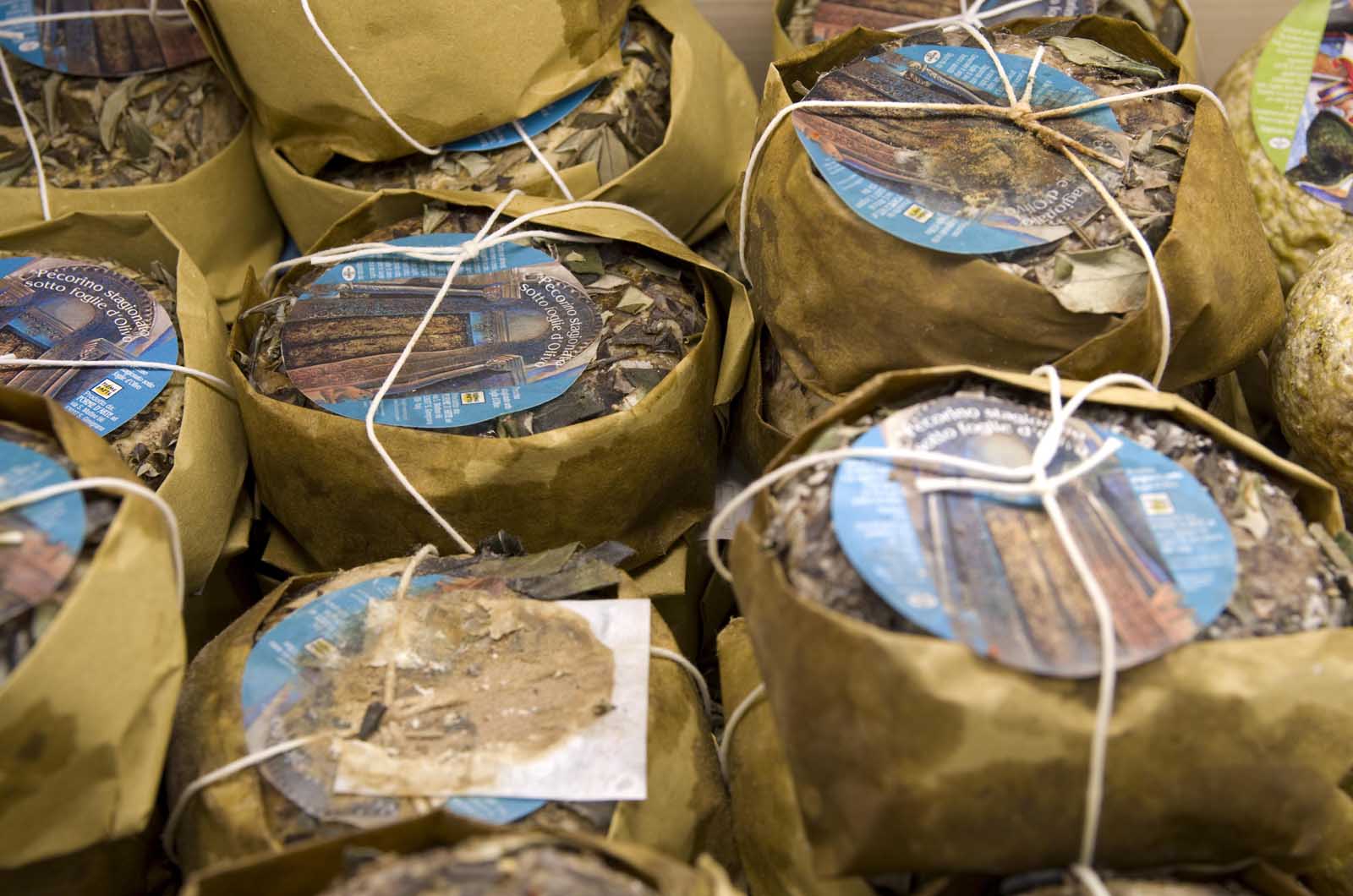
The oldest Italian cheese in our guide is pecorino cheese. Pecorino cheese is different from the other cheeses we’ve mentioned and is made from sheep’s milk rather than cow or buffalo.
When Italian recipes have fundamental differences, you know it is for a good reason. Pecorino is saltier with a slightly acidic taste. It is usually matured for between eight and twelve months, getting harder and more suitable for grating cheese as it ages. If you wanted pecorino to serve in slices as a table cheese, you’d only have to wait five months.
Pecorino was eaten during Roman times and was commonplace at festivals and as a staple food for legion soldiers. Pecorino is the best choice if you want to try one of Italy’s oldest and most historical cheeses. Italy really takes cheeseboards to an educational level.
14. Spaghetti carbonara
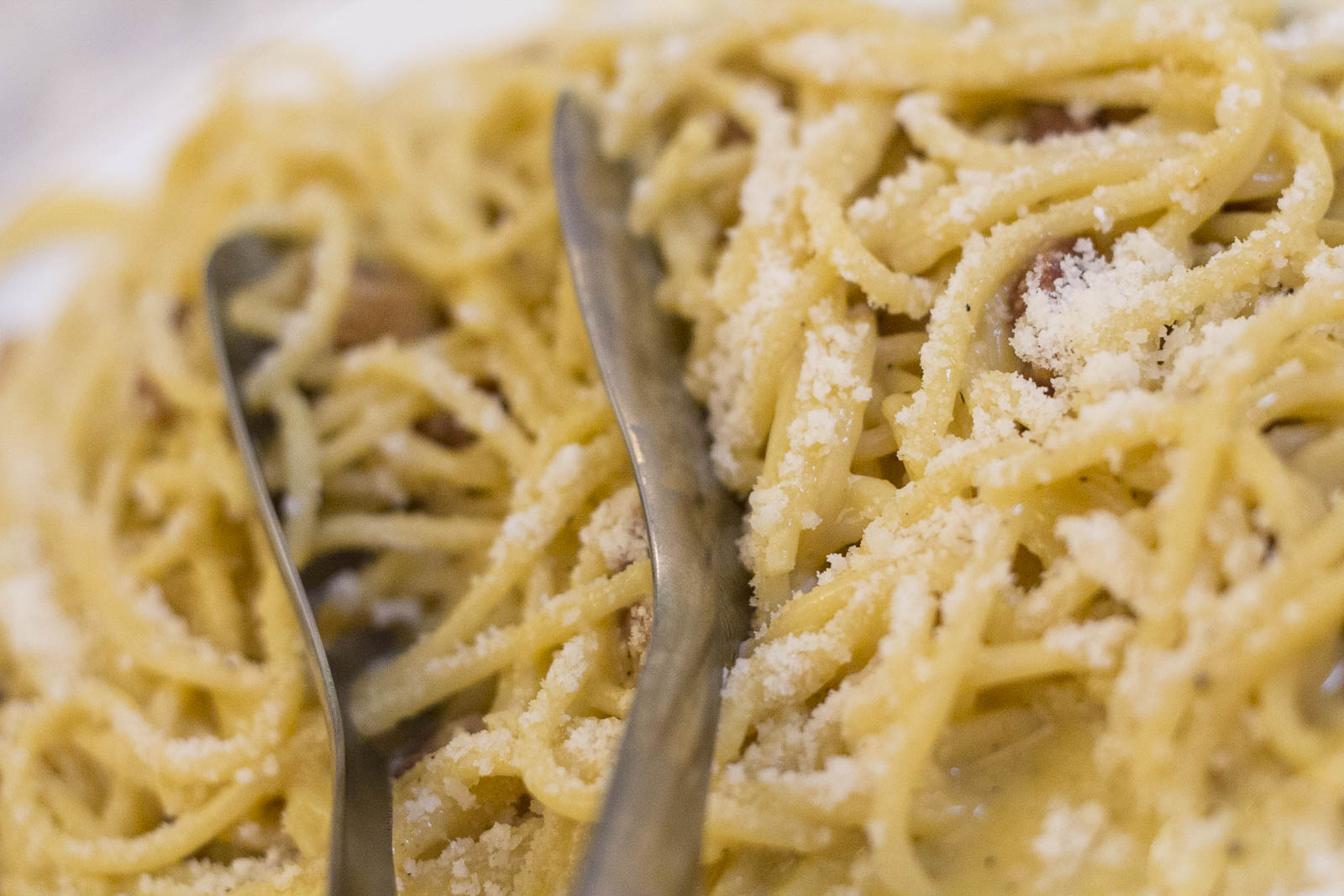
Just picturing a creamy spaghetti carbonara is enough to get most stomachs rumbling. This is one of the Italian recipes that has spread worldwide, and, chances are, you’ve already tried a spaghetti carbonara even if you haven’t visited Italy.
If you haven’t, spaghetti carbonara is an Italian pasta dish that uses egg, cheese, pork meat, and often cream. In Italy, spaghetti carbonara is made with fresh pasta, cut carefully into thin spaghetti shapes. The carbonara sauce is quite similar to an alfredo sauce in taste and texture. It is usually seasoned lightly with salt and pepper and is considered a warming, hearty meal in Italian cuisine.
The history of the carbonara is relatively unknown, and most people date its creation around the 1940s. However, egg and pasta have been combined in dishes since the 17th century in Italy, so chances are carbonara has existed in a basic form for multiple centuries.
15. Olio D’Oliva
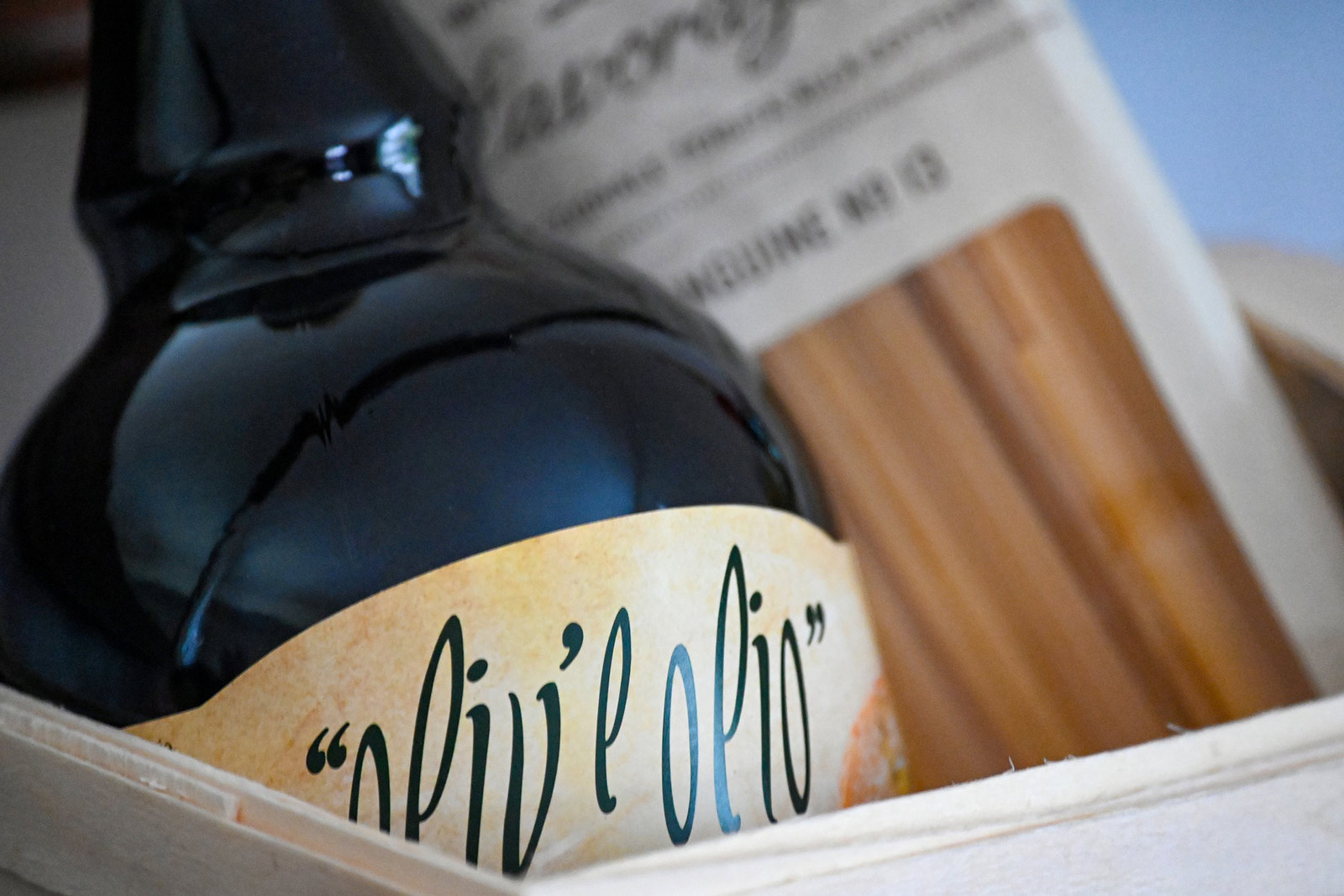
Olive oil may seem a strange stand-alone addition to a guide on Italian foods. However, in Italy, olive oil is a dish in its own right.
Italy is covered in olive groves, and if you get the chance, we’d highly recommend sampling some fresh Italian olives as well. These olive groves are also fantastic for creating olive oil, though, and the cooking oil you find in Italy is some of the purest in the world. Olives are harvested in bulk and pressed to create extra virgin olive oil. The liquid fat released is then bottled and used as a dressing or for cooking.
Olive oil is arguably the backbone of Italian cuisine. Whether you want a tasty drizzle over your salad or a full-flavored oil for fried sardines, reaching for the olive oil is a way of life in Italy. If traveling to Italy, consider going on an olive oil tasting experience. You can learn more about production and taste some of the local oils for yourself.
16. Veal Milanese
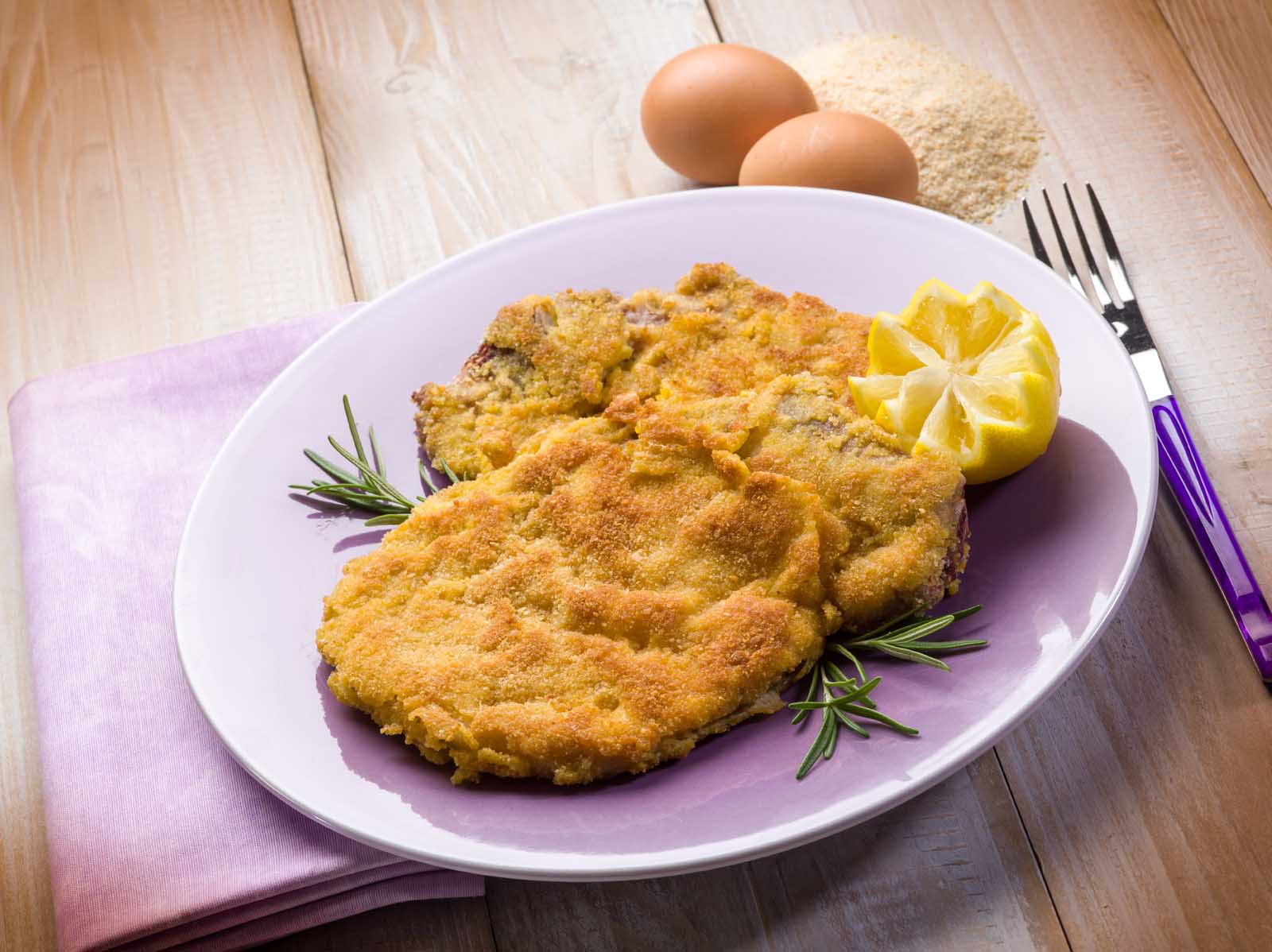
Speaking of fried foods, veal Milanese is one of the most delicious foods in Italy. It originates from Lombardy but is now widely eaten across Italy, with other countries like Austria and United States adopting new versions of the dish. Some of you may recognize the dish chicken Milanese, which is a popular American adaptation.
The dish consists of lightly breaded and fried veal escalope – usually a rib chop or sirloin bone-in cut. The veal is rolled in bread crumbs and fried in butter to give it a rich, buttery taste.
The exact history of veal Milanese is a mystery. Experts can pinpoint a location of origin but don’t have a date when the dish was first created. Similar breaded and fried meat dishes can be traced back to the Roman era. It is safe to assume that the veal Milanese recipe has been developed over at least a few centuries.
17. Ricotta cheese
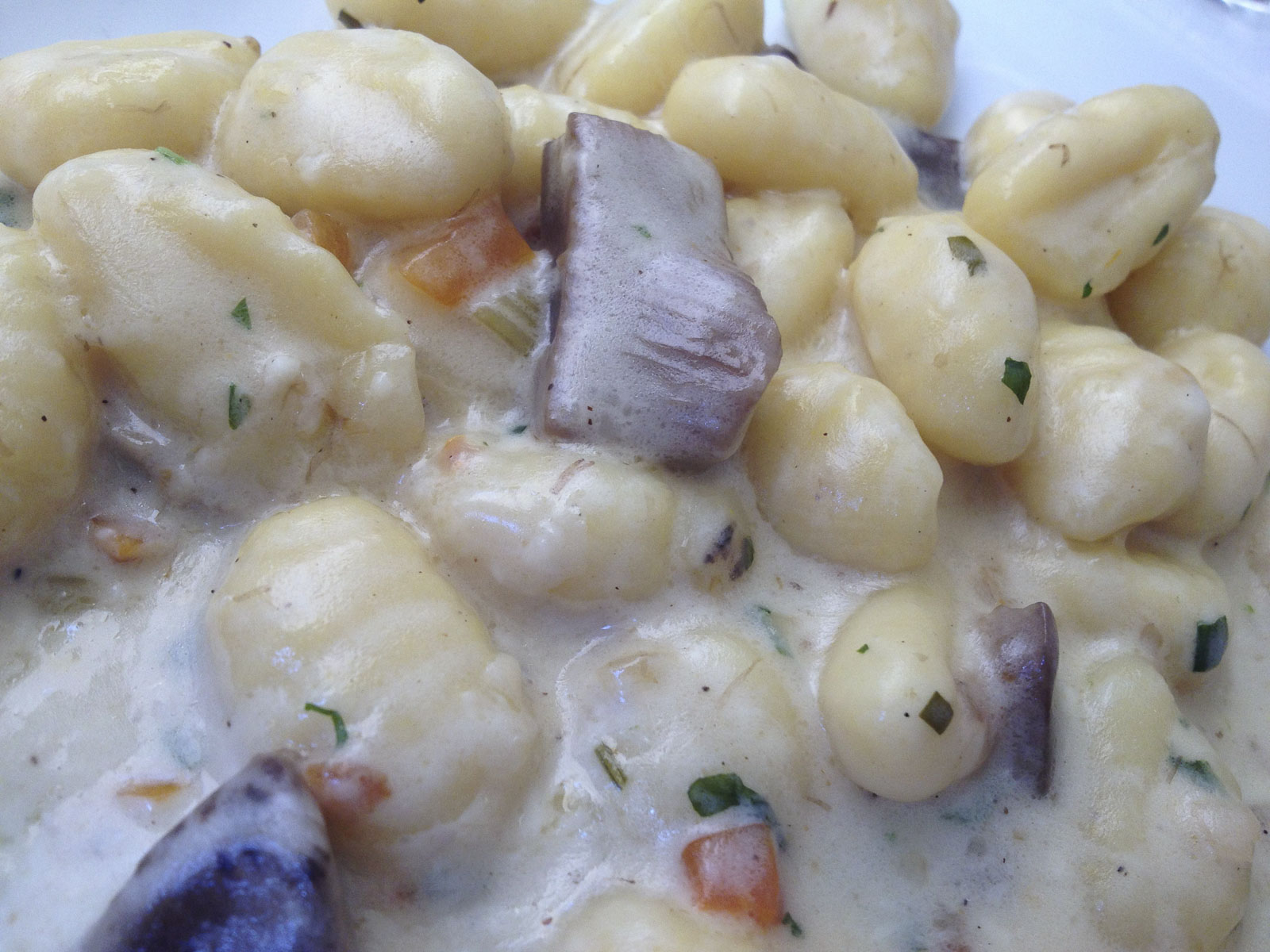
Ricotta cheese is our final cheese in this guide. However, interestingly, some people are actually hesitant to group it with Italy’s main cheeses, as it is only created as a byproduct of other cheeses.
If you aren’t familiar with this cheese category, they are called whey cheeses. A whey cheese is still a dairy product and contains around 50% leftover milk. It is high in proteins and minerals and is an excellent product for reducing waste.
Ricotta cheese can be made from all the common Italian kinds of milk – be it buffalo, cow, goat, or sheep. While rarely eaten on its own, ricotta is a popular stuffing for cannelloni and in homemade pasta dishes. Whey cheese has been produced since the Roman era and is widely believed to have originated in Sicily.
Italian Food Gluten Free Guide
Are you Celiac or have a gluten intolerance? Our friend Jodi at Legal Nomads has created detailed gluten-free cards that have been translated into Italian by native speakers. These cards were created to help people with celiac disease travel and eat in Italy safely. Carry them with you and show them to restaurants and staff to ensure they understand your food requirements. Get more details and Purchase your gluten free Italian card here for just $8.99.
18. Béchamel chicken
Some foods are always a source of controversy, and, in Italian cuisine, béchamel sauce is stirs up the conversation. Béchamel sauce is considered a staple in French cuisine and is widely believed to have originated in France, however, Italy also has its own version of Béchamel sauce, which is used to create this dish. Many Italians believe that it was, in fact, the Italian Queen Catherine de Medici that introduced France to the sauce and so take all the credit.
Béchamel sauce is also known as white sauce and is a thick, creamy consistency. Béchamel chicken is cooked by browning chicken breasts and then baking them in the sauce – creating a flavorsome meat meal. Béchamel chicken is straightforward to cook at home, although if you get the chance, you shouldn’t turn down trying it in Italy.
19. Lasagna al Forno
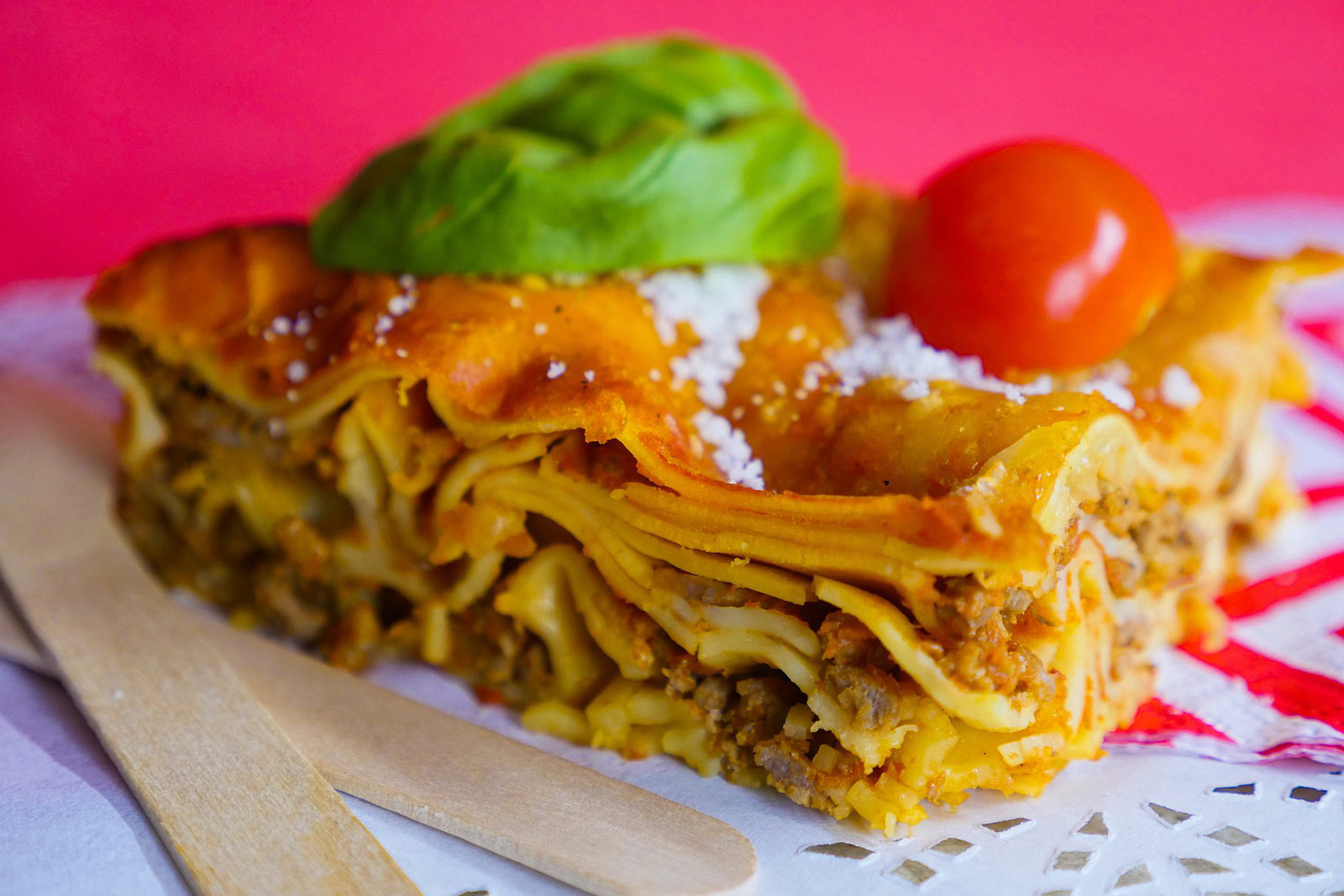
Fancy a traditional lasagna? Lasagna al Forno is the most popular lasagna variation in Italy. The recipe uses minced beef and multiple lasagna noodles (so technically should be referred to ask lasagne, not lasagna). It also incorporates béchamel sauce, which provides a yummy layer between the noodles.
Lasagna is believed to have originated in Naples at some point in the Middle Ages. There is lots of documentation of a nearly identical dish called ‘lasana’ in the Roman era. Lasagna is thought to be one of Italy’s oldest recorded foods.
20. Nzuddi
You might assume that Sicily is full of savory seafood dishes thanks to its coastal location. But this couldn’t be further from the truth. Nzuddi is a delicious Italian dessert and hugely popular Sicilian dish.
A nzuddi is a small, round cookie that contains almond, lemon, cinnamon, and orange zest. We recommend trying one as a sweet snack in Italy or ordering some to try at home. Of course, the confident bakers amongst you can always try to bake nzuddi themselves.
If you try a nzuddi in Italy, you’ll most likely be offered to pair it with a dessert wine or espresso. The cookies are popular in the Sicily region all year round. Still, you can find them widespread across Italy during the Our Lady of the Letter festival.
21. Fritto di Sardine
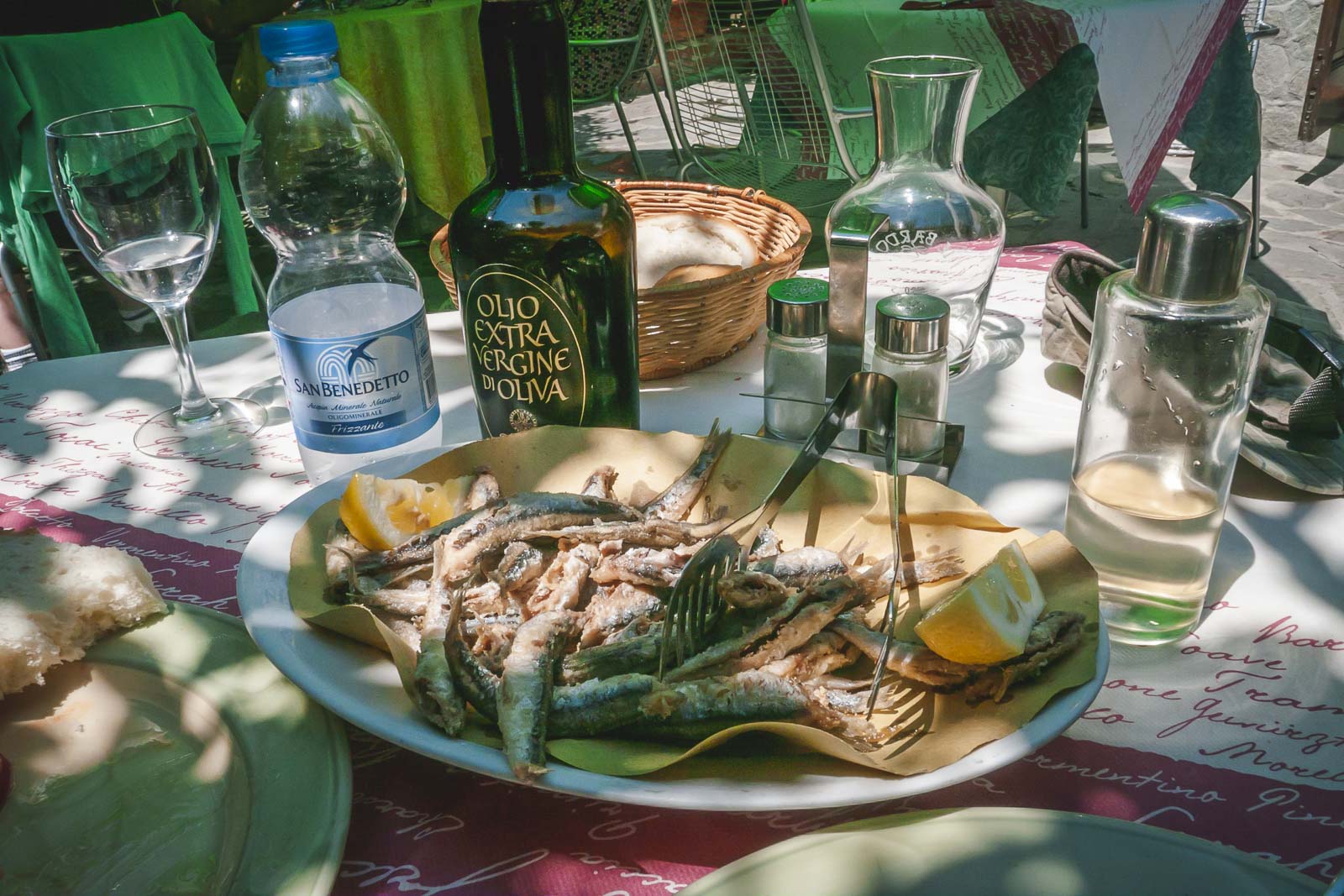
Another recipe from Southern Italy, fritto di sardine is one of our easiest foods to guess the translation.
Fried sardines are a specialty in Italy and are a meaty, somewhat salty fish. Fried sardines can be cooked and served in bread crumbs, skinned, or as whole fishes with skin intact. They are typically served as a stand-alone dish, often with a lemon wedge to squeeze over them before eating.
Sardines have been eaten for centuries in Italy, especially in coastal areas. Sardines are popular in Italy for their snack-friendly size, distinctive taste, and high nutritional value.
22. Pangoccioli
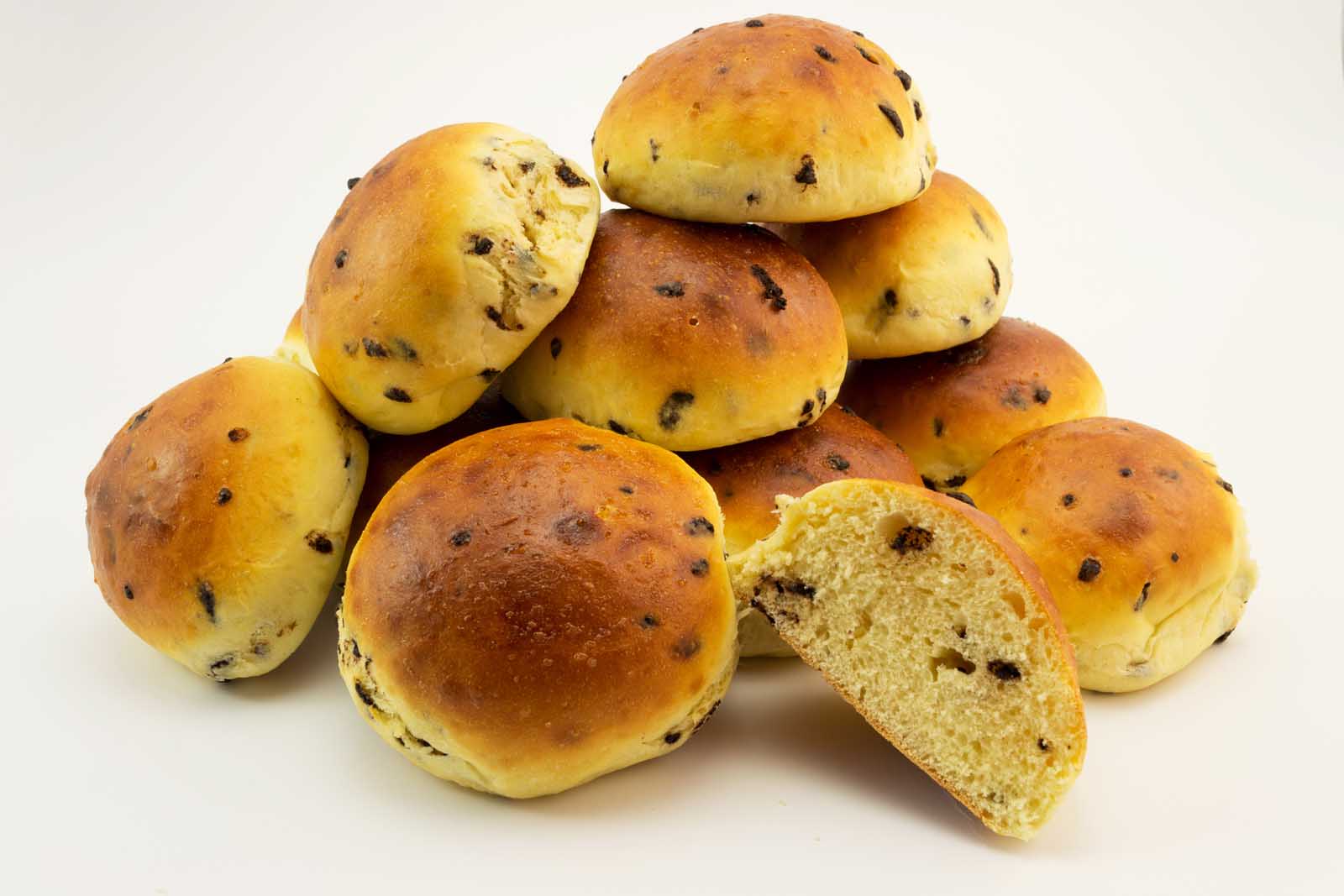
Looking for a sweet treat? Pangoccioli is a sweet bread bun filled with chocolate chips, a bit like an Italian brioche. You can find pangoccioli in supermarkets or freshly baked in bakeries, so definitely try one if visiting Italy.
Pangoccioli is baked like any bread or pizza dough; the secret is to create a perfect dough consistency. When baking from scratch, you mix various ingredients, including milk, yeast, and flour. Leaving the dough to rise is absolutely necessary to get a perfect end product, and baking pangoccioli is quite a fine art.
Pangoccioli is commonly eaten for breakfast in Italy or as a quick, takeout brunch. However, nothing is stopping you from eating them whenever you want. We won’t judge you.
23. Ciabatta
If you prefer savory bread, don’t worry, Italy has lots of that too. Italian crusty bread is a dream-worthy food that will make you daydream about your next holiday. The most popular crusty bread is ciabatta.
Compared to other Italian recipes, ciabatta is the new food on the block. The bread was created in 1982 in response to the sudden popularity of French baguettes. A baker in Veneto decided to create an Italian take on the popular bread, and ciabatta was born. Now, ciabatta is also eaten internationally and across Italy.
Ciabatta is commonly used for bruschetta – the entrée dish with chopped tomatoes and basil served on crunchy bread and drizzled with virgin olive oil. Ciabatta is also served alongside soups, as the crusty texture is perfect for dipping.
24. Fettucine with Bolognese sauce
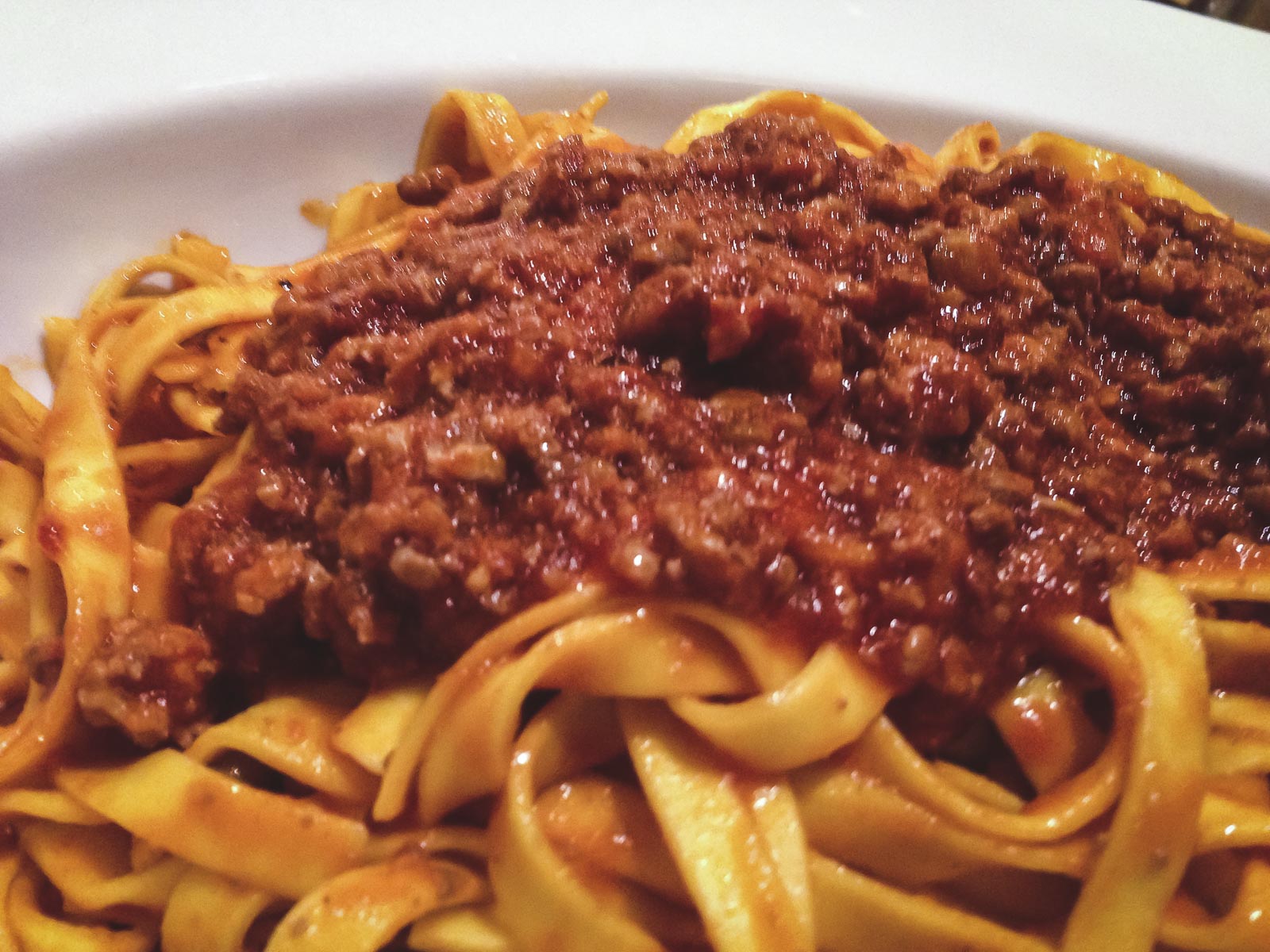
If you want a handmade pasta dish with a rich meat sauce, look no further than a Fettuccine bolognese. Bolognese is a popular Italian sauce that is so delicious that it is now used worldwide, and Fettuccine is one of Italy’s best pasta types.
Fettuccine is a flat pasta that is cut into thick ribbons. It is typically paired with a tomato and rich meat sauce or an alfredo sauce. In this case, it is paired with a bolognese sauce. The tomato and meat sauce is perfect for those wanting to sample Italian mince meat.
Bolognese sauce is created using canned tomatoes or homegrown tomatoes where possible. It is often a spicy tomato sauce full of herbs and flavor. Vegetables like bell peppers and onion are fried and added to the sauce alongside the meat.
You could make a Fettuccine bolognese at home. It is undoubtedly a worthwhile recipe to master. However, we’d also recommend sampling the dish in Italy where possible, as family and regional recipes often create an entirely different culinary experience.
25. Castagnaccio
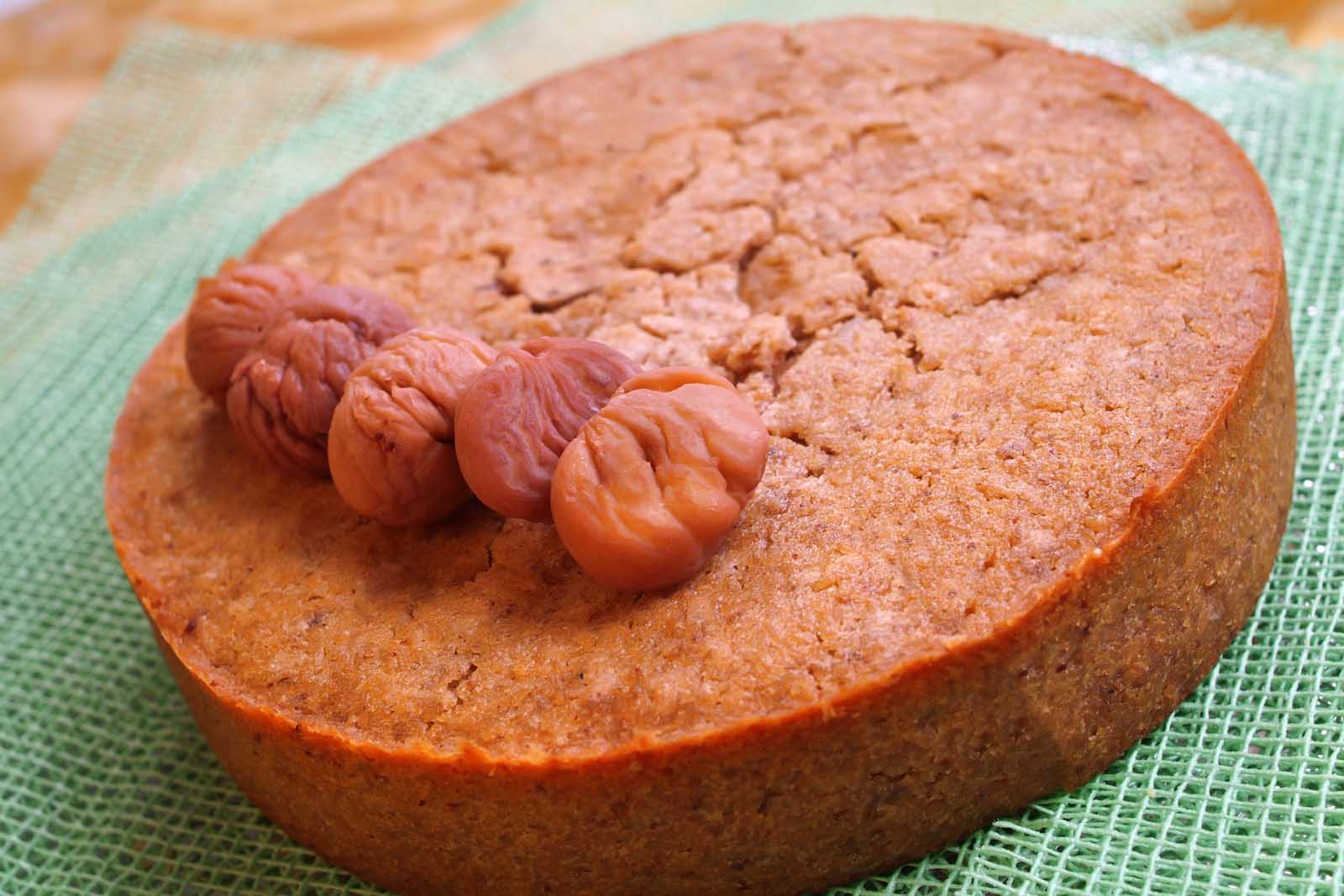
If you loved the other desserts on our list, you would adore Castagnaccio. Castagnaccio is a chestnut flour cake that is popular in Northern Italy. It was initially associated with peasant families as it was cheap to make and buy, but now it is a widespread threat.
Castagnaccio is known for its dense, compact, but moist texture. It typically has no added sugar, so it relies on the natural sweetness of the chestnut flour and fruit. Similarly, traditional recipes use no eggs, butter, or yeast. Instead, castagnaccio consists of pine nuts, raisins, oil, walnuts, chestnut flour, and water.
If you are vegan, castagnaccio is an excellent introduction to Italian desserts. Just check when purchasing if the cake uses a traditional recipe, as different bakers may add different ingredients.
26. Rosa di Parma
Rosa di Parma is a great choice if you’d prefer a meat dish to introduce you to Italian cuisine. The dish consists of a pork loin seasoned with garlic and dried herbs like rosemary. The pork is served stuffed with parmigiana cheese as a tasty surprise touch.
Rosa di Parma has quite a specific cooking method. The fillet is tenderized and cut open, and stuffed with parmigiana cheese. It is then cooked in a mixture of natural pork fat, butter, and wine.
Rosa di Parma is usually eaten at festivities or for special occasions. However, you can always create the dish at home or research restaurants serving it ahead of time.
27. Polpettes
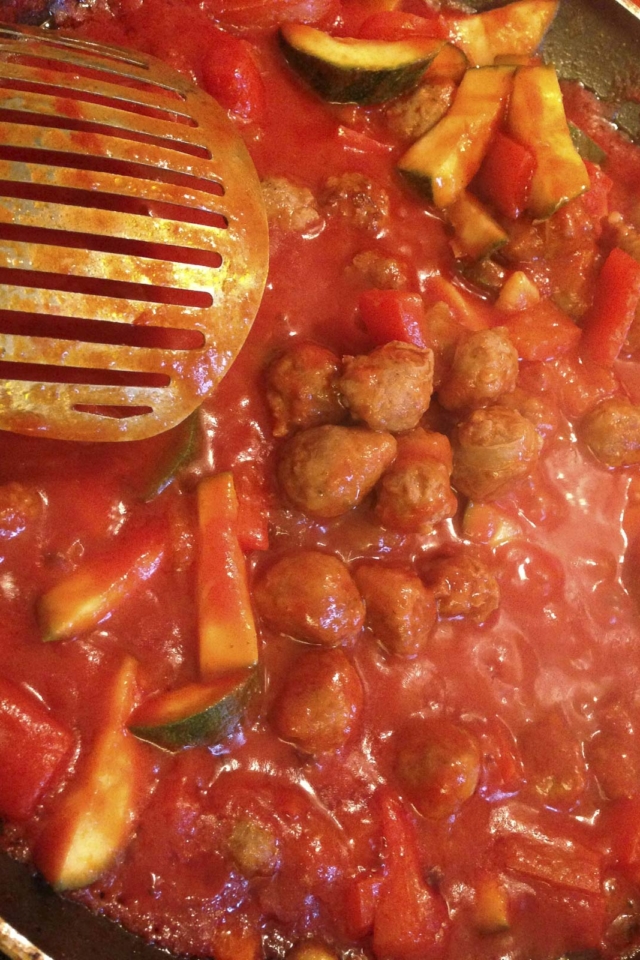
Our last recommendation is Italian meatballs. Polpettes are a Venetian specialty and are served in chunky marinara sauce. Unlike the smooth tomato sauce served with meatballs outside of Italy, the Italian sauce is much tangier and uses rough-cut tomatoes. The meatballs themselves can be beef, ricotta, or a vegetable mix – so they aren’t necessarily created with actual meat.
The original meatballs are believed to have come from Persia, which makes sense considering Italy engaged in lots of trade with Persia centuries ago. From Persia, the food spread around Europe, and Italy formed its own unique recipe.
Polpettes are a filling and hearty dish. If you are looking for evening meal inspiration, you could create this dish at home or find it in most Italian restaurants.
Final Thoughts
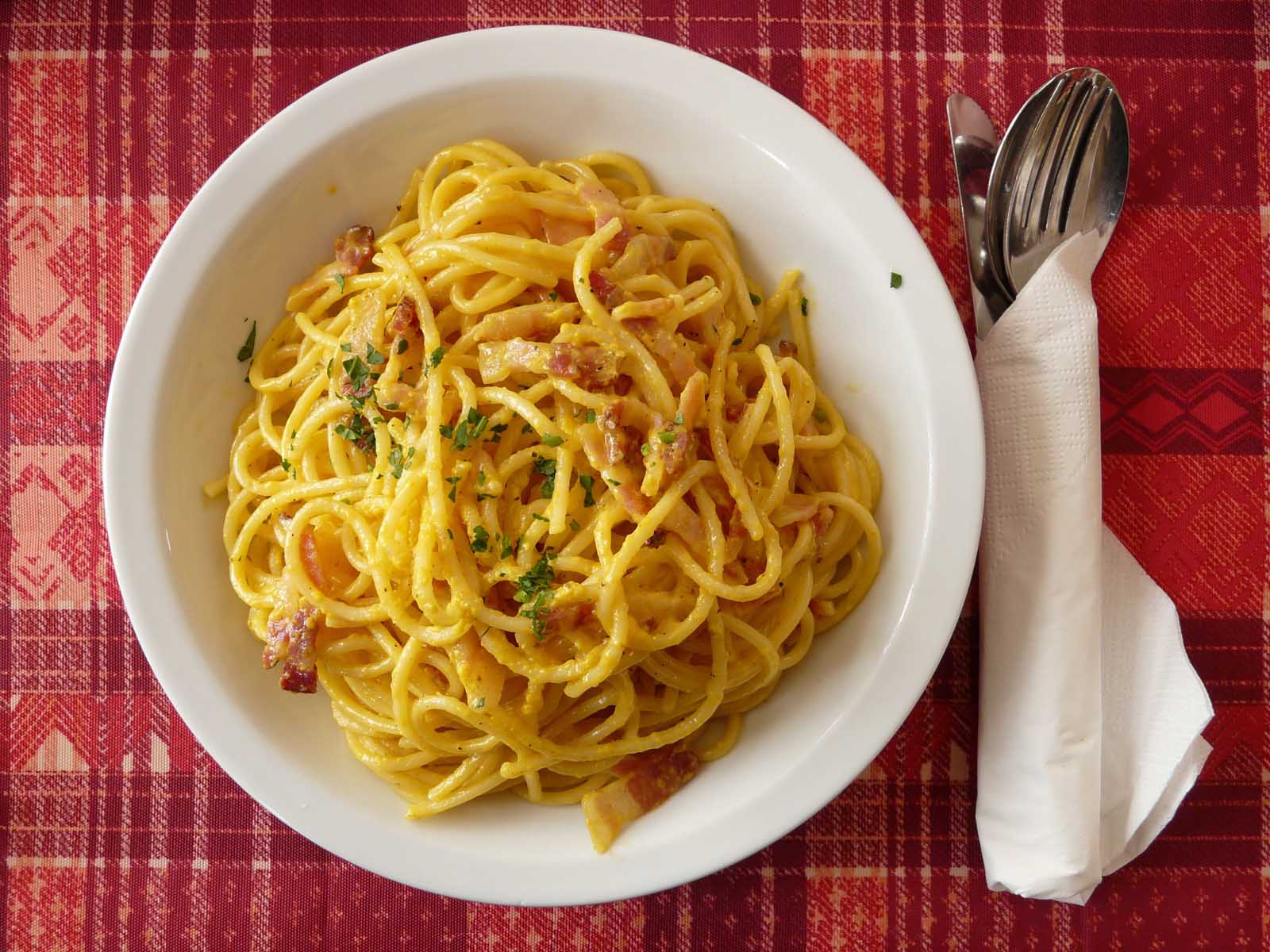
Italy is full of fantastic cuisine, and your taste buds are in for a treat. The fresh herbs and rich flavors make Italian food some of the best in the world. Whether you are visiting Rome or Bologna, the regional differences are a pleasure to explore.
We recommend trying as many of these dishes as possible. Once you’ve tried them all, keep trying more new Italian foods. Adventurous eating is one of the most fun ways to explore a cuisine.

